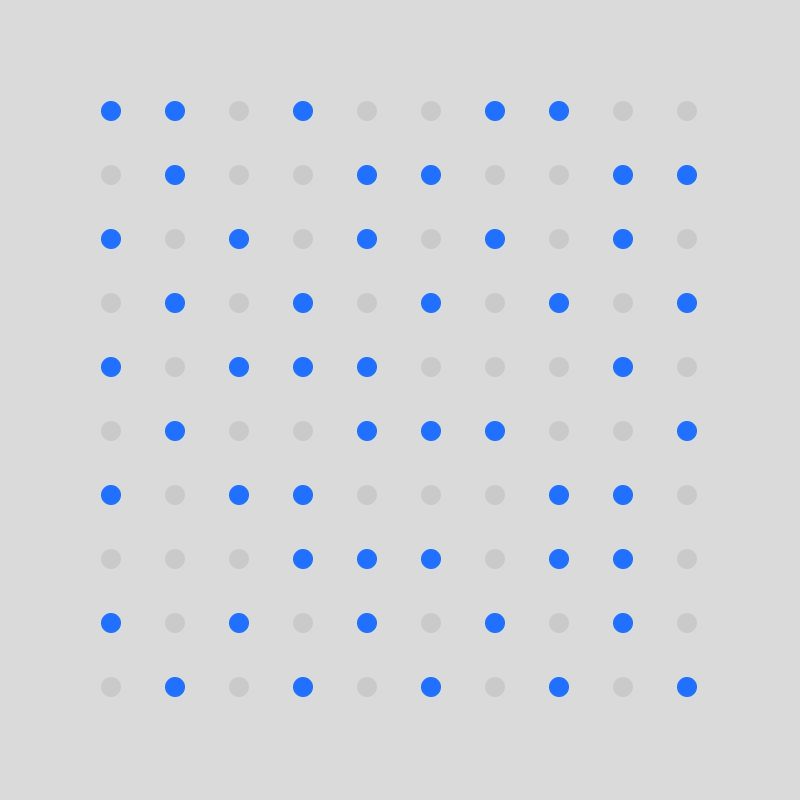The internet isn’t for humans anymore.
Bots use the internet more than we do; use shapes design.

There are 100 circles in the image shown above. Half of them are blue, and the other half are grey. But for most people, it won’t look like that at first glance.
–
As of last year, half of the internet’s traffic came from bots. This is a headline that has been repeated many times because it sounds important, but without much in the way of helpful context, it doesn’t carry much meaning. What is internet traffic? And how much, exactly, is half?
The measures are shifting rapidly; bots accounting for 49.6% of all internet traffic in 2023 is up 2% from the previous year. While 2% may seem small, it’s important to remember that it’s a relative measure of staggering proportions.
In 2023, it was estimated that 5.4 billion people had access to the internet — only 67% of the total global population, but still a great many human beings. Clear traffic measures are harder to come by. The total estimated internet traffic in 2022 — measured in data — was 913 exabytes of mobile broadband data and 4,378 exabytes of fixed-broadband data. To put this in perspective, 1 exabyte is equal to 1 billion gigabytes. Internet data traffic growth is measured by various outlets — I frankly couldn’t find a singular, global estimate — at 10-23%, so it’s possible that data accessed in 2023 could be closer to 6,500 exabytes.
- 5.4 billion human internet users in 2023
- 913 exabytes of mobile broadband data in 2022
- 4,378 exabytes of fixed broadband data in 2022
- 49.6% of internet traffic attributed to bots in 2023
Putting this all together, this means that ~3,228 exabytes of data may have been accessed by bots last year. It doesn’t mean that there are 2.7 billion bots on the internet. We actually don’t have an accurate measure of the number of active bots because there is no requirement to identify and disclose them to any authority. But because bot requests are detectable, we can measure how many there are, and how much data is attributed to them. (The vast majority of bot traffic comes from Google IP addresses — no surprise there.)
But it really doesn’t matter how many bots there are, or even how many humans there are, comparatively. What matters is how the internet is being used. Use, after all, shapes design.
On the one hand, you could say that these measures indicate progress; we use machines to organize and interact with information that, in volume and complexity, exceeds our grasp and understanding. Without them, we’re lost, adrift on a sea of noise. But on the other hand, you could say that our dependence upon machines changes the very nature of our information — that what we used to create for us, we now create for them.
This has happened before, with search engines. What was created as a tool to help us find information quickly became a system that determined what information was created, how it was accessed, and how much of it exists. The more we learned to game the system, the less useful we made it. Oh, and then search became something you could pay for.
AI will be no different.
As intellectually engaged as I am by the notion of agentic design — of altering the way we design information in anticipation of a non-human agent accessing it first — I am also concerned about the power we will cede in the process. We have never known enough about search algorithms. We’ll know even less about AI. We should think long and hard about what that will mean.
–> A desire for understanding creates demand for information.
–> An abundance of information creates a demand for machines.
–> A system of machines creates a new kind of information.
–> A desire for understanding demands a new kind of machine.
Half is a tipping point that we can only measure in hindsight.